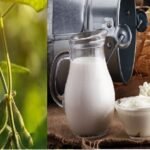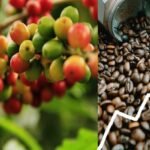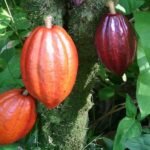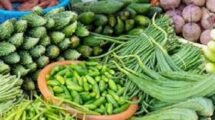UP relegate WB as a leading producer of vegetables, AP continues top fruit grower.
After two years, Uttar Pradesh has returned to its status as the leading producer of vegetables, relegating West Bengal to second place, but the disparity between the two is now more than a million tonnes. Andhra Pradesh, on the other hand, continues to be the leading fruit grower.
Vegetable production in Uttar Pradesh is expected to be 29.58 million tonnes (mt) in the 2021-22 crop year (July-June), down from 29.16 mt the previous year, according to data presented in the Lok Sabha on Tuesday, while West Bengal output is expected to dip to 28.23 mt from 30.33 mt. In 2018-19, the difference between Uttar Pradesh and West Bengal in vegetable production was roughly 0.7 million tonnes.
Also Read | Foods and vegetables look like body parts can boost sex drive.
Madhya Pradesh, with 2.59 mt, Bihar, with 17.77 mt, and Maharashtra, with 16.78 mt, are the other leading producers of veggies this year, according to data.
In the year 2021-22, Andhra Pradesh is expected to grow 18.01 mt of fruits, up from 17.7 mt last year, while Maharashtra is expected to produce 12.3 mt, up from 11.74 mt last year. Uttar Pradesh, with 11.26 mt, Karnataka, with 8.55 mt, and Gujarat, with 8.24 mt, are the other major fruit producers. Gujarat’s production, by the way, has stayed unaltered from the previous year.
The MIDH program
Separate targets for the production of fruits and vegetables are not issued to the States, according to Union Agriculture Minister Narendra Singh Tomar. From 2014 to 2015, the Ministry of Agriculture and Farmers’ Welfare has been implementing a Centrally funded scheme called the Mission for Integrated Development of Horticulture (MIDH) to promote holistic growth of the horticulture sector, which includes fruits, vegetables, root,s and tuber crops, mushrooms, spices, flowers, aromatic plants, coconut, cashew, and cocoa. The Area Expansion component of the MIDH strategy, which is executed through State Horticulture Missions (SHMs), supports the production of fruits and vegetables, he noted.
Apples are grown in warmer regions
Tomar further stated that the Indian Council of Agricultural Research (ICAR) has taken several initiatives to boost apple cultivation in hotter climates. For this reason, the Central Institute of Temperate Horticulture (CITH) in Srinagar has found low-chill apple types such as Anna, Dorsett Golden, Mayan, and Michael and has started reproducing them. This year, planting material of low-chill cultivars was delivered to the Jammu region, he said.
Also read | Many of the foods we thought were vegetables are actually fruits!
CITH has also done DUS testing (Distinctness, Uniformity and Stability) for the preservation of the low-chill apple cultivar HRM-99, which is widely supported by farmers in Karnataka, Haryana, and Punjab according to the minister.
DUS testing: determines whether a newly bred variety differs from existing varieties within the same species (the Distinctness part), whether the characteristics used to determine Distinctness are expressed uniformly (the Uniformity part), and whether these characteristics do not change over subsequent generations (the Uniformity part) (the Stability part).
As production of vegetables, spices, and plantation crops decline, the country’s horticulture output is expected to fall by 0.4 percent to 333.25 million tonnes in 2021-22. However, while potato and tomato production is expected to decline, onion production is expected to increase.


















Add Comment